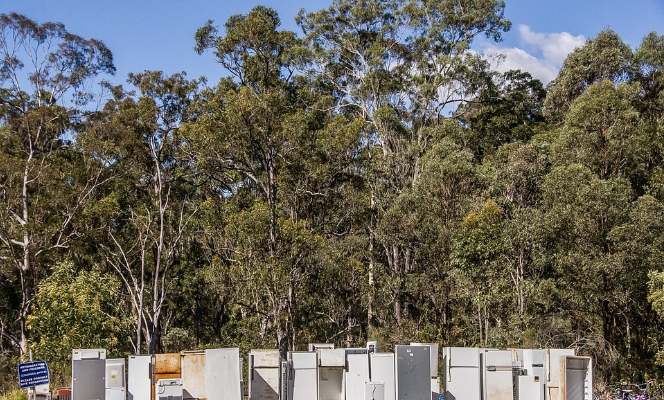Like most of us, you probably have an old appliance or two just taking up space in the garage. And if you’ve acquired, say, a new refrigerator, you now have another old appliance to get rid of. You should, then, consider recycling these old appliances. But for effective and efficient appliance recycling, you need to know a little about the whole process.
Why Recycle Appliances as Part of Waste Management?
We should all practice appliance recycling because landfills are filling up. The average American generates about a 1,000 pounds of waste each year, and Americans as a whole generate around 250 billion tons of waste every year. That’s a lot of waste that takes up a lot of room.
In addition, these discarded appliances release toxins into the environment that adversely affect biodiversity and present profound health hazards to humans. Just consider these facts:
- The chlorofluorocarbons (CFCs) in refrigerators and air conditioners manufactured before 1995 contribute to climate change and ozone depletion.
- Many window air conditioners contain hydrochlorofluorocarbon (HCFC) that also adversely affects the atmosphere.
- Freezers manufactured before 2005 have insulating foam that contains ODS, another substance that contributes to ozone depletion and climate change.
- Various components, especially switches and relays, in many household appliances contain toxic substances such as PCBs, hazardous oils, and mercury.
On the plus side of recycling, steel is the most recycled material in this country, and the steel from recycled appliances accounts for roughly 10% of steel recycled annually. Also, many utility companies will grant you a credit for purchasing new appliances when you recycle your old one.
What Happens at the Recycling Center
For effective and efficient appliance recycling and to help you understand the process, here’s what happens at waste management and recycling centers:
- Each appliance is manually dismantled (“demanufactured”).
- Hazardous components are removed and properly disposed of.
- Reusable parts are then identified and salvaged.
- Recyclable raw materials like steel and plastic are then removed and sent on to secondary processing centers.
Today, recycling is growth industry that has created 757,000 jobs and yearly generates $36.6 billion in wages and $6.7 billion in tax revenues (EPA).
How to Prepare Old Appliances for Recycling
So now you’re ready to recycle that old appliance, but what – exactly – do you need to do? It just takes a little preparation in a few easy steps, like this:
- Unplug the appliance at least several hours ahead of time (preferably a few days) to have it cooled and ready before calling the recycling haulers.
- For older air conditioning units, if the recycler doesn’t remove Freon, you will need to contact the professionals who do this.
- If the old appliance is still functional and useable, check into to places that accept donations.
- Remove all contents from appliances like refrigerators, freezers, and dishwashers.
- Tape all doors and drawers shut with strong tape like duct tape so that they don’t come open (and possibly break off) during transport.
How to Get Rid of Appliances for Recycling
And now it’s time to actually get the appliance removed from your property and do your part for waste management and improving the environment. You have a few options here, depending on your strength and your vehicle’s hauling capacity.
Some areas offer curbside recycling services (usually at specified times) for large, bulky objects. So if you have a dolly and plenty of strength or help, you can just deposit the old appliance at the curb. Just be sure to check whether there are any special preparation requirements.
If you have a pickup truck or large enough trailer, along with loading help, you can haul the appliance to the recycling center yourself. These at often located at the landfill, so you may have to pay a dump fee.
A third option is to call a junk hauling company to load up and haul off the appliance. You just need to make sure it’s a hauling company that also specializes in recycling appliances. Generally, this is a more affordable – and certainly easier – option than hauling it yourself.




